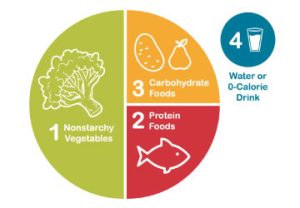National Diabetes Month: Prevention and Management, Plus Bonus Recipe

Diabetes
Diabetes is a chronic disease that affects how your body turns food into energy and is coupled with high blood glucose or blood sugar. Most of us know someone affected by this disease, which is consistent with recent statistics. In 2019, more than 37.3 million people in the US had been diagnosed with diabetes, with more than one in four people over age 65. In 2017, US diabetes health care costs reached 327 billion dollars. Diabetes is considered a national epidemic and is the 7th leading cause of death. If not well-managed, diabetes can lead to damage to the heart, blood vessels, eyes, kidneys, and nerves.
Prediabetes
Prediabetes is usually diagnosed before diabetes when the blood sugar is higher than normal, but not high enough for a diagnosis of diabetes. This condition is very common; it is estimated that 96 million US adults have it, or more than 1 in 3 adults. Since there are sometimes no obvious symptoms, more than 80% of people don’t know they have it.
Risk factors may include:
- Being over the age of 45 years
- Being overweight
- Family history of diabetes
- Not being physically active
- History of gestational diabetes
- History of polycystic ovarian syndrome
The good news is that prediabetes can be delayed or reversed and does not always mean a future diagnosis of diabetes.
Prevention & Diabetes Management
Eating a healthy diet and moving more can make a big difference in both the progression of prediabetes, and in the successful management of diabetes. With prediabetes, small lifestyle changes can delay or prevent the development of diabetes and for those with diabetes, these same changes can improve diabetes management to prevent the long-term damage caused by poorly controlled diabetes.
Having a diet with more fruits and vegetables, lean meats and plant-based sources of protein, less added sugar, and less processed food is a healthy way of eating for everyone, including those with prediabetes and diabetes. The American Diabetes Association has developed a simple plate-method that offers an easy-to-use visual for meal planning called the Diabetes Plate Method.
 |
|
For more information about diabetes and excellent resources, including delicious recipes, go to https://diabetes.org/food-nutrition. A fantastic recipe from the website is featured below.
Collard Greens with Yellow Squash
Source: The Create-Your-Plate Diabetes Cookbook. Recipe Credit: Toby Amidor, MS, RD, CDN, FAND
Yield: 4 servings
Ingredients
- 1 bunch (about 8 oz) collard greens, washed and dried
- 2 Tbsp olive oil
- 2 slices turkey bacon
- 2 cloves garlic, minced
- 1 medium yellow squash, cut in half moons
- 1 cup low sodium vegetable broth
- 1/8 tsp black pepper
- 1/8 tsp salt (optional
Directions
- Remove the woody stems that run down the center of the collard leaves. Neatly pile several leaves and tightly roll them up, then slice into ribbons. Repeat for all collard greens.
- Heat 1 tablespoon olive oil in a medium sauté pan over medium heat. When the oil is shimmering, add the turkey bacon and cook until golden brown, 3 minutes on each side. Remove the bacon and set aside to slightly cool. Dice the bacon once cool.
- Heat the remaining 1 tablespoon of olive oil in the same sauté pan over medium heat. When the oil is shimmering, add the garlic and cook until fragrant, 30 seconds. Add the collard greens and squash and cook until the collards have wilted and the squash begins to soften, about 5 minutes. Add the vegetable broth and bring the mixture to a boil. Lower the heat and simmer, covered, until the vegetables are cooked through, 10 minutes.
- Add 1/8 teaspoon salt (optional), the black pepper, and cooked turkey bacon and toss to combine.